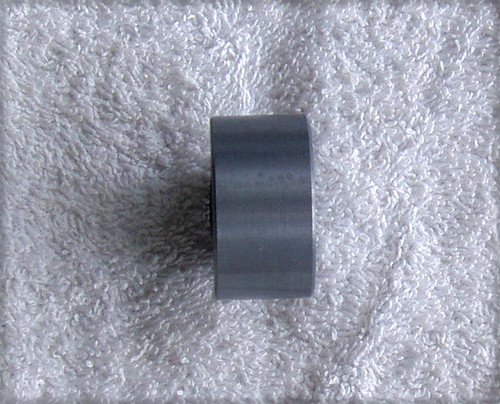HISTORY:
Very sad to see this funky, old English Garrard turntable become an 'organ donor' but at least it may give new life to another SL-72B out there somewhere!
Produced in the period 1970 ~ 1973 by the famous Garrard Engineering (high quality innovative turntable manufacturers and other interesting electronic equipment) in England, actually their parent company was Plessey, having been sold to Plessey in the 1960's but the Garrard brand name continued on. We obtained this turntable in the 1990's, lubed it up (biggest problem with these old turntables) and used it primarily for the ability to play 78's - our business was music post production and archival work for clients and we had a need to play a LOT of the good old 78's (early Les Paul etc)
This turntable will play 45 & 33 as well of course but we had other turntables (Technics SP10's, Dual & a Linn LP12 for those). But the best part of this turntable was the 'fun' of using it, loading up vinyl/shellac on the stacker and playing up to 6 records, one after the other - it's a pretty amazing sight to see in action! It is also 'visually' a very funky turntable, extremely retro!
After being used for a while it was then put into our 'graveyard' of audio equipment around 2000 as we had no further use for it.
After around 20 years sitting in the 'audio graveyard', I have bought it out to see if someone else might like one of these classic Garrards (although not as good as the ZERO 100's (but no 78 play capability on those), it is still a nice looking and sounding turntable when setup correctly and treated with respect!
It was while checking this old girl out that I discovered that she was destined for a proud career as an 'organ donor' - it had a major issue and I am not prepared to mess around looking for the spare part required.
So what was wrong? (I hear you asking)
On the far left hand side is the speed/record size rotary control - this moves the idler wheel position and is critical to selecting the correct speed and predetermining the size of the record being played (for auto use). Most of the Garrard is metal but alas they chose to use an all plastic lever button for this speed selection. This rotary control has two small fingers which sit in the metal cam's underneath, transfering the rotary motion of the speed knob to a vertical movement of the idler wheel when selected the different speeds.
The two fingers have both completely come away (snapped off - there really are no fingers at all now) and a repair looks to be very difficult if not impossible and I do not have a replacement button. So without being able to select the speeds or the appropriate record size at all, the turntable is pretty useless to anyone in it's original assembled form.
Again I hear you 'why did the button break' - that dreaded problem with all old grease, it had gone hard and all the metal work underneath associated with the speed/size control had seized up. Forcing the rotary button from above was too much for the feeble plastic and it just broke away! End of speed control.
So, let's get on with describing the spare part I am offering here - remember, I am offering 'organs' from the turntable, it is a 'non-turntable' now as I have carefully and completely dismantled it!
NOTE: Keep in mind that many Garrard turntable parts from this era are interchangeable with other Garrard models - PLEASE CHECK YOUR SERVICE MANUAL TO ESTABLISH THE SUITABILITY OF THIS PART TO YOUR OWN TURNTABLE.
GARRARD SL-72B TURNTABLE - Turntable Mat SPARE PART
Part #: 74431
Includes the Aluminium outer ring (73030) and the inner aluminium ring (73033/004)
Diameter: 260mm
Mat thickness: 2.5mm
Rubber material
Ribbed outer edge and inner area
Aluminium trim (2)
COSMETIC CONDITION:
CLEAN
Not disformed in any way, lies flat on the platter * See note below about this
No damage at all EXCEPT look at the aluminium ring, particularly the larger outer ring. I have seen this aluminium oxidisation (or rotting) on my old Technics equipment, in fact a lot of Japanese gear using aluminium shows these marks. The aluminium has a thin lacquer like material covering it (to make it look shiny) and I believe it is this lacquer that is causing the problem. I have given it a light rub with metal polish but didn't continue as I wondered about how worthwhile the effort was - it doesn't look too bad, just noticeable.
* In the underside photograph you can see a line, that is NOT a cut and has not penetrated the rubber material in any way - it was improperly stored and the item the mat was sitting on left an impression in the rubber - this in no way weakens it or affects the operation.
You may also see 6 rectangular outlines on the underside. When originally put together by Garrard they used 6 strips of a double sided adhesive cloth tape to secure the mat in position on top of the platter. I have removed those strips and cleaned up the residue glue.
Corresponding rectangular outlines can also be seen on the platter topside, perfectly normal.
Since removing the mat and preparing the photographs, I have now placed it within sealed plastic on a stiff card backing to maintain the present condition.














